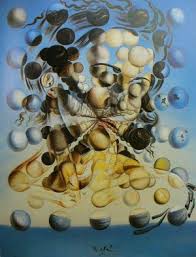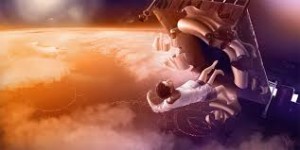Consciousness enjoys its physical orientation. Dreams provide consciousness with its own creative play, therefore, when it need not be so practical or so “mundane,” allowing it to use its innate characteristics more freely.
Many people are aware of double or triple dreams, when they seem to have two or three simultaneous dreams.. Usually upon the point of awakening, such dreams suddenly telescope into one that is predominant, with the others taking subordinate positions, though the dreamer is certain that in the moment before the dream were equal in intensity. Such dreams are representative of the great creativity of consciousness, and hint of it ability to carry on more than one line of experience at one time without losing track or itself.
In Physical waking life, we must do one thing or another, generally speaking. Obviously I am simplifying, since we can eat an orange, watch television, scratch our foot, and yell at the dog — all more or less at the same time. We cannot, however, be in Boston and San Francisco at the same time, or be 21 years of age and 11 at the same time.
In double dreams and triple dreams consciousness shows its transparent, simultaneous nature. Several lines of dream experience can be encountered at the same time, each complete in itself, but when the dreamer wakes to the fact, the experience cannot be neurologically translated; so one dream usually predominates, with the others more like ghost images.
There are too many varieties of such dreams to discuss here, but they all involve consciousness dispersing, yet retaining its identity, consciousness making loops with itself. Such dreams involve other sequences than the ones with which we are familiar. They hint at the true dimensions of consciousness that are usually unavailable to us, for we actually form our own historical world in the same manner, in that above all other experiences that one world is predominant, and played on the screen of our brain.
Take a very simple event like eating of an orange. Playfully imagine how that event is interpreted by the cells of your body. How is the orange perceived? It might be directly felt by the tip of your finger, but are the cells in your feet aware of it? Do the cells in your knee know you are eating an orange?
Take all the time you want with this. Then explore your own conscious sense perceptions of the orange. Dwell on its taste, texture, odor, shape. Again, do this playfully, and take your time. Then let your own association flow in our mind. What does the orange remind you of? When did you first see or taste one? Have you ever seen oranges grow, or orange blossoms? What does the color remind you of?
Then pretend you are having a dream that begins with the image of an orange. Follow the dream in your mind. Next, pretend that you are waking from the dream to realize that another dream was simultaneously occurring, and ask yourself quickly what the dream was. Followed in the same sequence given, the exercise will allow you to make loops with your own consciousness, so to speak, to catch it “coming and going.” And the last question — what else were you dreaming of? — Should bring an entirely new sequence of images and thoughts into your mind that were indeed happening at the same time as your daydream about the orange.
These feel and practice of these exercises are their important points — the manipulation of a creative consciousness. We exist outside of our present context, but such statements are meaningless, practically speaking, unless we give oneself some freedom to experience events outside of that rigid framework. These exercises alter our usual organizations, and hence allow us to encounter experience in a fresher fashion.
A double dream is like the double life lived by some people who have two families — one in each town — and who seemingly manipulate separate series of events that other people would find most confusing. If the body can only follow certain sequences, still consciousness has inner depths of action that do not show on the surface line of experience. Double dreams are clues to such activity.
While each person generally follows a given strand of consciousness, and identifies with it as “myself,” there are other alternate lines beneath the surface. They are also quite as legitimately the same identity, but they are not focused upon because the body must have one clear, direct mode of action.
These strands are like double dreams that continue. They are serve as a framework to the recognized self. In periods of stress or challenge the recognized self may sense these other strains of consciousness, and realize that a fuller experience is possible, a greater psychological thickness. On some occasions in the dream state the recognized self may then enlarge its perception enough to take advantage of these other portions of its own identity. Double or triple dreams may represent such encounters at times. Consciousness always seeks the richest, most creative form, while ever maintaining its own integrity. The imagination, playing, the arts and dreaming, allow it to enrich its activities by providing feedback other than that received in the physical environment itself.






